Split Fiction: A Detailed Review
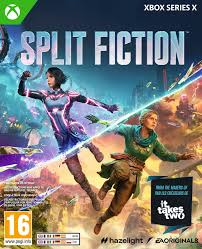
Overview
Split Fiction, Hazelight Studios’ follow-up to their massively successful It Takes Two, builds on the studio’s reputation for innovative co-op gameplay while venturing into new narrative territory. Released in late February 2025, this adventure game continues Josef Fares’ commitment to mandatory cooperative play but with a more ambitious narrative structure that literally splits reality between players.
Story
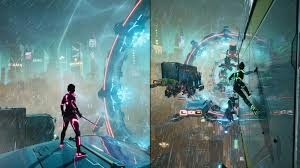
The game follows estranged siblings Alex and Maya, who discover a mysterious novel that, when read simultaneously, transports them into parallel versions of the same world. Each player experiences a different reality with unique characters and situations, but these realities occasionally overlap and influence each other.
What makes Split Fiction remarkable is how it handles this concept: while both players are in the same physical space, they see different environments, NPCs, and obstacles. Communication between players becomes crucial as information from one reality often provides solutions to problems in the other.
The narrative explores themes of perception, memory, and reconciliation as the siblings must confront how differently they’ve interpreted their shared past. Without spoiling the major plot points, the story delivers several emotional gut punches reminiscent of It Takes Two but with a more mature and nuanced approach to family dynamics.
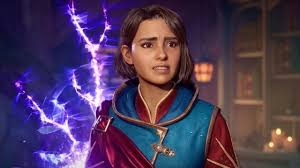
Gameplay
The split-reality mechanic is more than just narrative window dressing – it fundamentally shapes gameplay:
- Asymmetric Information: Players must verbally describe what they’re seeing to their partner, as crucial details might only be visible in one reality.
- Reality Manipulation: Certain actions in one world ripple into the other, creating interesting cause-and-effect puzzles.
- Synchronized Challenges: At key moments, the realities align for spectacular set pieces requiring perfect coordination.
The game features less variety in mechanics compared to It Takes Two’s constantly changing gameplay, but what’s here feels more refined and purposeful. Each of the six chapters introduces new twists on the reality-splitting concept rather than entirely new gameplay styles.
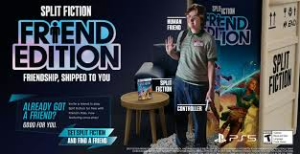
Visual Design
Visually, Split Fiction is stunning. The art direction uses distinct colour palettes and architectural styles to differentiate the parallel worlds while maintaining enough similarity that they feel like variations of the same place. The transitions between realities – occurring when players enter special zones or complete specific actions – are seamlessly executed with impressive visual effects.
Sound & Music
The soundtrack deserves special mention for handling the dual-reality concept. Music shifts subtly between players depending on their current situations, sometimes harmonizing when their experiences align and diverging when they face different challenges. Voice acting is excellent throughout, with the sibling protagonists delivering performances that feel authentic in both lighter moments and emotional confrontations.
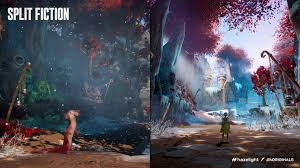
Technical Performance
On current hardware, Split Fiction runs smoothly at 60fps with minimal loading screens between areas. The game’s unique technical requirements – rendering essentially two different game worlds simultaneously – occasionally lead to minor graphical hiccups during particularly complex sequences, but nothing that significantly impacts the experience.
Length & Replayability
A complete playthrough takes approximately 10-12 hours, shorter than It Takes Two but with more optional content and collectables that reveal additional story details. Replayability comes from switching roles between the siblings to experience an alternate reality, though the main story beats remain unchanged.
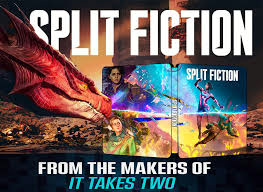
Final Assessment
Split Fiction represents a studio confidently exploring new creative territory while refining what made their previous work special. While it doesn’t reinvent the wheel in terms of moment-to-moment gameplay mechanics, its innovative approach to cooperative storytelling and puzzle design creates a uniquely memorable experience that’s almost impossible to replicate in single-player games.
The game’s focus on communication between players – not just through gameplay mechanics but as a necessary meta-layer – makes it one of the most genuinely cooperative experiences in gaming. It demands and rewards teamwork in ways that feel natural rather than forced.
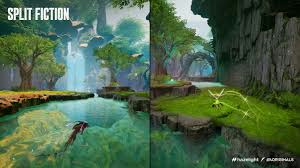
With its compelling narrative, strong technical execution, and creative implementation of its central concept, Split Fiction earns its place alongside Split Fiction earns its place alongside It Takes Two as an essential co-op experience, though it’s more focused on narrative depth than gameplay variety.
Rating: 9/10 – An exceptional co-op experience that pushes the boundaries of interactive storytelling.


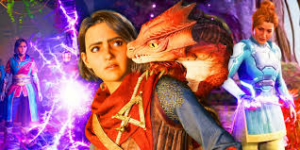 in 2024).
in 2024).





